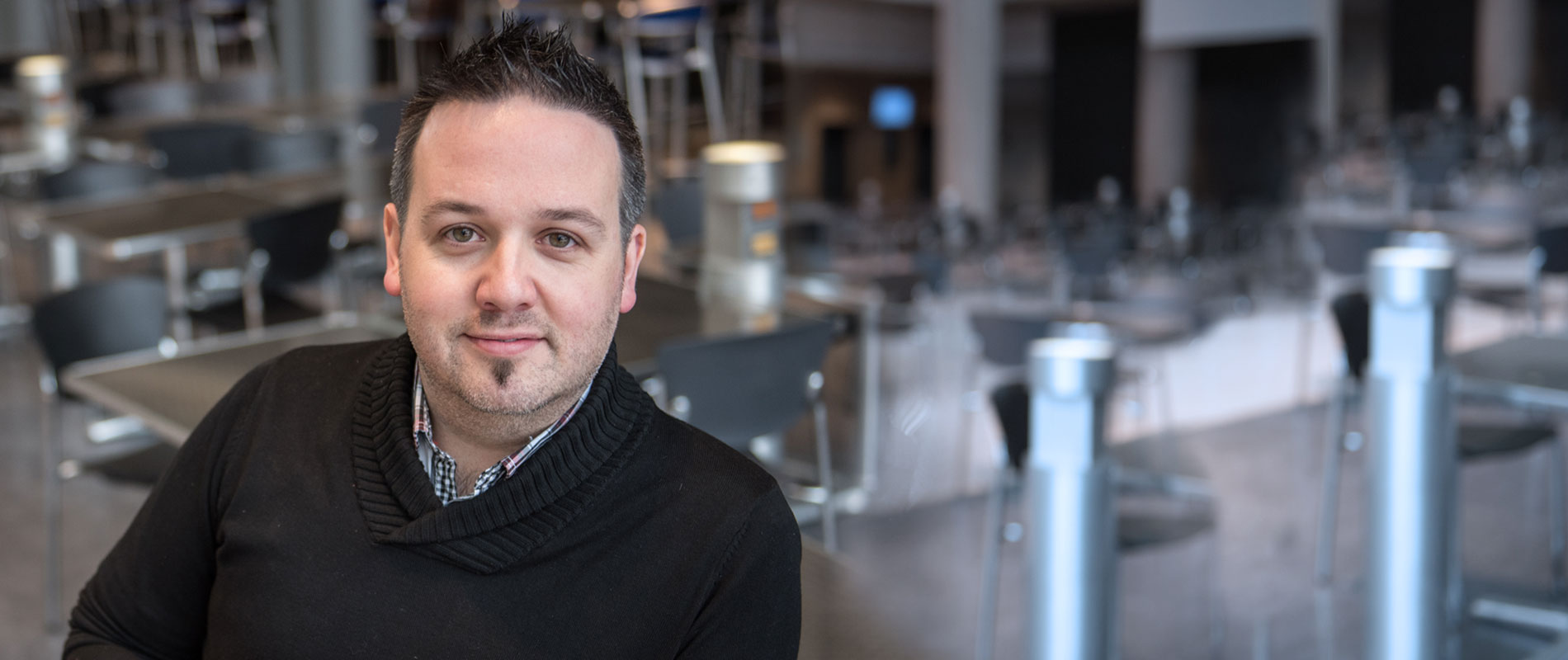Portrait of a researcher

Unusual plasma applications
Luc Stafford
FACULTY OF ARTS AND SCIENCE
Professor in the Department of Physics
Holder of the Canada Research Chair in the Science and Applications of Highly Reactive Cold Plasma to Atmospheric Pressure
What attracted research physicist Luc Stafford to this field was the vast potential of studying plasma and the complexity of this highly reactive material. “Studying plasma lets us make connections with all the sub-disciplines of physics: electromagnetism, fluid mechanics, statistical physics, quantum mechanics.”
Stafford admits that he is a great dreamer, but he’s never been satisfied with studying the traditional applications of plasma, in lighting, television and micro-electronics. “I’m always getting out of my comfort zone! I like to innovate with plasma-based processes, to head off in unusual directions. In the materials field, for instance, Stafford and his team were able to make some major advances in the use of plasma for treating wood, and in fact have become world leaders in this application. More recently, his research team has been looking at agriculture. “We’ve started work on water treatment that will allow us to use plasma to create pesticide-like products, but without the harmful effects of chemicals.”
For Stafford, dreaming remains a basic aspect of his job. But does he always find time to dream? “In fact that’s one of my faults, that I dream too much! I’m never happier than when I’m musing about cross-disciplinary research themes and coming up with new projects. It’s my way of pushing myself to do my best.”
How did you become a researcher?
I wanted to innovate and invent, and explore things that interested me. I wanted to decide on my own research topics, and that would have been harder in the private sector.
What are you trying to pass on to your students?
We often think of physicists as Einstein-like figures, locked away in their laboratories and absorbed in problems of pure physics. I’m more interested in developing not just my students’ knowledge of physics, but also their ability to innovate and come up with practical applications. I have to say that I’m lucky to have some students who are recruited even before they’ve finished their studies!
What brought you to Montréal?
I wanted to have the chance to teach and conduct research in my language. The Université de Montréal is the largest French-language university in North America. I find that appealing. You know, research is published in English, but in my lab, day-to-day research is done in French.